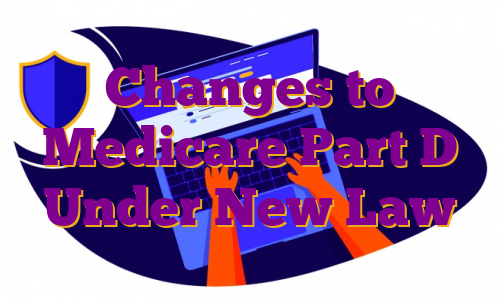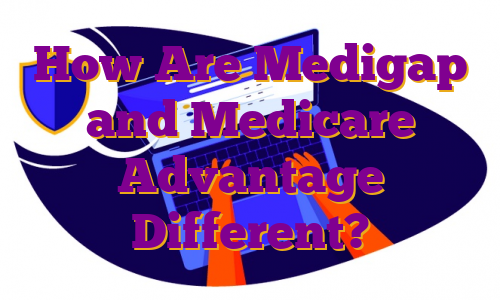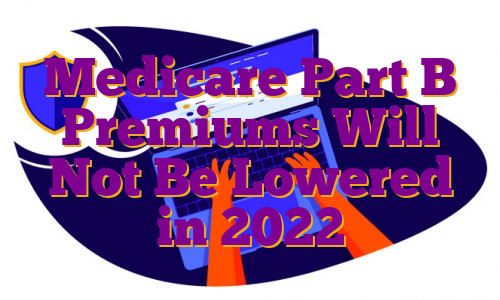andresr | E+ | Getty ImagesMedicare may seem like a maze when you first try to navigate it.After all, there are different “parts” to the federal health insurance program, which provides coverage for about 56.5 million individuals in the 65-and-older crowd. And, whether you’re reaching the eligibility age of 65 or you are older and switching from workplace insurance to Medicare, there are some important factors to consider that affect your wallet.First, however, it’s worth knowing the basics: Original Medicare consists of Part A (hospital coverage) and Part B (outpatient care).More from Investor Toolkit:
3 tips for paying down your credit card balances
Democrats call for action on Social Security reform
Investors are flocking to green energy fundsSome beneficiaries choose to get those benefits delivered through an Advantage Plan (Part C), which typically includes prescription drug coverage (Part D). Others stick with original or basic Medicare and, possibly, pair it with a standalone Part D plan and a so-called Medigap policy.Here are three key things to be aware of as you prepare to enroll.1. It’s going to cost youMedicare is not free.”This comes as a surprise to so many beneficiaries who have paid [payroll] taxes throughout their working lifetimes and assumed this would mean Medicare would be ‘paid up’ by the time they turn 65,” said Danielle Roberts, co-founder of insurance firm Boomer Benefits.”Those taxes will mean no premiums for Part A, but Parts B and D have premiums that beneficiaries pay monthly throughout their retirement years,” Roberts said.Premium-free Part A is available as long as you have at least a 10-year work history of paying into the system via payroll taxes. If not, monthly premiums could be as much as $499 in 2022, depending on whether you’ve paid any taxes into the Medicare system at all.Spouses without their own work history may qualify for premium-free Part A as well.Part A also has a deductible of $1,566, which applies to the first 60 days of inpatient hospital care in a benefit period. For the 61st through 90th days, beneficiaries pay $389 per day, and then $778 per day for 60 “lifetime reserve” days.Meanwhile, Part B’s standard monthly premium is $170.10 this year. However, some beneficiaries pay more through income-adjusted surcharges.”Many of my high-income earners are shocked at how much Medicare premiums will cost them in retirement,” said Elizabeth Gavino, founder of Lewin & Gavino and an independent broker and general agent for Medicare plans. The government uses your tax return from two years earlier to determine whether you’ll pay extra. To request a reduction in that income-related amount due to a life-changing event such as retirement, the Social Security Administration has a form you can fill out.Part B also has a deductible: $233 in 2022. Once that’s met, beneficiaries generally are responsible for 20% of covered services. Part D premiums, deductibles and copays depend on the specifics of the coverage. The average premium this year is about $32, according to the Centers for Medicare & Medicaid Services. And, as with Part B, higher earners are charged extra through IRMAAs.2. Missing key deadlines can mean paying extraIf you’re planning to sign up for Medicare as soon as you’re eligible at age 65, you get a seven-month “initial enrollment period” that starts three months before the month of your 65th birthday and ends three months after it.Meanwhile, if you delayed signing up at age 65 because you continued to work and your employer coverage was acceptable (according to Medicare standards), you get eight months to enroll once your workplace plan ends.Regardless of the enrollment rules your subject to, missing the deadline to sign up for Part B can result in a life-lasting late-enrollment penalty. For each full year that you should have been enrolled but were not, you’ll pay 10% of the monthly Part B standard premium.”Many of my high-income earners are shocked at how much Medicare premiums will cost them in retirement.Elizabeth GavinoFounder of Lewin & GavinoPart D also has a late-enrollment penalty if you miss the deadline. For people signing up during their initial enrollment period at age 65, you get the same seven months for Part D as you do for Part B. However, if you’re beyond that window and your workplace coverage is ending, you get two months to enroll in Part D, whether as a standalone plan or through an Advantage Plan.The penalty is 1% of the national base premium for each month you didn’t have Part D or creditable coverage and should have.3. Supplemental insurance may make senseThe various costs associated with basic Medicare may be different if you have supplemental coverage.One option is to enroll in an Advantage Plan. While you would generally continue to pay your Part B premiums, many plans have a low or zero premium. And in addition to usually including prescription drug coverage, Advantage Plans also may offer extras such as dental, vision and hearing. Advantage Plans come with a cap on out-of-pocket spending, unlike basic Medicare. Their cost-sharing structures — i.e., deductibles, copays or coinsurance — also are different and vary from plan to plan.However, the annual maximum out-of-pocket can be high: in 2021, it averaged $5,091, according to the Kaiser Family Foundation. You also may be required to use certain doctors, hospitals and pharmacies.”These plans have networks of providers and some plans will require you to choose a primary care physician and get referrals to see certain providers and prior authorizations for many of the more expensive procedures, tests and surgeries,” Roberts said.Your other option is Medigap, which picks up some cost-sharing associated with basic Medicare, such as the Part A deductible or Part B copays. These policies are offered by private insurance companies as well, but are generally standardized — same-named plans offer identical benefits no matter which insurer sells it. Available Medigap policies are designated A, B, C, D, F, G, K, L, M and N and each offers a different level of coverage.However, they can be pricey, depending on the insurer and where you live. A 65-year-old woman in Dallas might pay under $100 monthly for Plan G, while in New York that same person would pay $278, according to the American Association for Medicare Supplement Insurance. And, generally speaking, those premiums rise over time.Choosing between an Advantage Plan or Medigap (or neither) can involve things that go beyond cost and depend on the specifics of your situation. This makes it worth consulting with either an experienced Medicare agent or your local State Health Insurance Assistance Program, otherwise known as SHIP, and neither would cost you anything for guidance.”There are many factors to consider when choosing between these two options,” Gavino said. .
Changes to Medicare Part D Under New Law
Another change to the Medicare drug benefit that begins in 2025 is the requirement that Part D plans offer enrollees the option of what is called smoothed cost-sharing. This means you can opt to have your out-of-pocket costs spread out over the year. This is designed to protect people from being hit with such a big drug bill at one time that it may discourage them from filling their prescriptions.
Premium increases limited
According to the new law, beginning in 2024 and continuing through 2029, Part D premiums cannot increase by more than 6 percent a year. In 2022 the national average Part D premium is $33.37 a month. The amount of these premiums varies widely, depending on where you live and what plan you select.
Insulin charges curbed
Beginning in 2023, copays for a 30-day supply of any insulin that a Medicare drug plan covers will be capped at $35. Note that Part D plans will be required to adhere to the $35 copay limit even if an enrollee has not met their annual deductible.
The price could be lower if insulin becomes subject to negotiation with drugmakers. Given that, although the monthly maximum copay will be $35 from 2023 to 2025, beginning in 2026 (the first year negotiated prices would take effect), insulin copays will be $35 or 25 percent of the drug’s negotiated price (whichever is less).
Many vaccines free
Starting on Jan. 1, 2023, Medicare enrollees won’t have any out-of-pocket costs for vaccines that the Centers for Disease Control and Prevention’s Advisory Committee on Immunization Practices recommends for adults.
Medicare Part B, which applies to doctor visits, diagnostic tests and other outpatient services, already fully covers some vaccines, including flu shots, pneumonia vaccines, hepatitis B inoculations and coronavirus vaccines (initial shots as well as boosters).
But other vaccines, most notably the expensive vaccine for shingles, are covered under the Part D prescription drug plans, and many of those plans currently require enrollees to share the cost of those shots. The new law eliminates that cost-sharing.
Dena Bunis covers Medicare, health care, health policy and Congress. She also writes the “Medicare Made Easy” column for the AARP Bulletin. An award-winning journalist, Bunis spent decades working for metropolitan daily newspapers, including as Washington bureau chief for the Orange County Register and as a health policy and workplace writer for Newsday.
.
Strategies can help you avoid paying extra for Medicare premiums
Morsa Images | DigitalVision | Getty ImagesFor some retirees, there’s an extra cost associated with Medicare premiums that can ambush their household budgets.Most Medicare enrollees pay the standard premium amounts for Part B (outpatient care) and Part D (prescription drugs). Yet an estimated 7% of Medicare’s 64.3 million beneficiaries end up paying extra because their income is high enough for income-related monthly adjustment amounts, or IRMAAs, to kick in, according to the Centers for Medicare & Medicaid Services.Whether you have to pay the surcharge is based on your modified adjusted gross income as defined by the Medicare program: your adjusted gross income plus tax-exempt interest income. For 2022, IRMAAs kick in when that amount is more than $91,000 for individuals or $182,000 for married couples filing joint tax returns. The higher your income, the larger the surcharge is.”You only have to go $1 over that [lowest] breakpoint and you’re subject to IRMAAs,” said certified financial planner Barbara O’Neill, owner and CEO of Money Talk, a financial education company. “If you’re close to that or close to going to a higher tier, you’ve really got to be proactive,” O’Neill said.In other words, there are some strategies and planning techniques that can help you avoid or minimize those IRMAAs. Here are four to consider:1. Focus on what you can control2. Consider converting to Roth IRA accountsOne way to keep your taxable income down is to avoid having all of your nest egg in retirement accounts whose distributions are taxed as ordinary income, such as a traditional IRA or 401(k). So whether you’ve signed up for Medicare yet or not, it may be worth converting taxable assets to a Roth IRA.Roth contributions are taxed upfront, but qualified withdrawals are tax-free. This means that while you would pay taxes now on the amount converted, the Roth account would provide tax-free income down the road — as long as you are at least age 59½ and the account has been open for more than five years, or you meet an exclusion.”You pay a little more now to avoid higher tax brackets or IRMAA brackets later on,” Meinhart said.It also helps that Roth IRAs do not have required minimum distributions, or RMDs, in the owner’s lifetime. RMDs are amounts that must be withdrawn from traditional IRAs as well as both traditional and Roth 401(k)s once you reach age 72.When RMDs from traditional accounts kick in, your taxable income could be pushed up enough that you become subject to IRMAAs, or to a higher amount if you already were paying the surcharge.”A lot of people get into trouble by taking no money out of their 401(k) or IRA, and then they have their first RMD and it puts them in one of those IRMAA brackets,” Meinhart said.3. Keep an eye on capital gainsIf you have assets that could generate a taxable profit when sold — i.e., investments in a brokerage account — it may be worth evaluating how well you can manage those capital gains. While you may be able to time the sale of, say, an appreciated stock to control when and how you would be taxed, some mutual funds have a way of surprising investors at the end of the year with capital gains and dividends, both of which feed into the IRMAA calculation. “With mutual funds, you don’t have a whole lot of control because they have to pass the gains on to you,” said O’Neill, of Money Talk. “The problem is you don’t know how big those distributions are going to be until very late in the tax year.”Depending on the specifics of your situation, it may be worth considering holding exchange-traded funds instead of mutual funds in your brokerage account due to their tax efficiency, experts say.For investments whose sale you can time, it’s also important to remember the benefits of tax-loss harvesting as a way to minimize your taxable income.That is, if you end up selling assets at a loss, you can use those losses to offset or reduce any gains you realized. Generally speaking, if the losses exceed the profit, you can use up to $3,000 per year against your regular income and carry forward the unused amount to future tax years.4. Tap your philanthropic sideIf you’re at least age 70½, a qualified charitable contribution, or QCD, is another way to keep your taxable income down. The contribution goes directly from your IRA to a qualified charity and is excluded from your income.”It’s one of the few ways you can really get money out of an IRA completely tax free,” Meinhart said. “And when you’re 72, that charitable distribution can help offset your required minimum distributions.”The maximum you can transfer is $100,000 annually; if you’re married, each spouse can transfer $100,000. .
How Are Medigap and Medicare Advantage Different?
Even though private insurers sell the Medigap plans, federal rules standardize the coverage. Insurers can offer up to 10 different plans, each labeled with a letter. (See table below for details.) Plans with the same letter include the same benefits, even if different insurance companies offer them, but the premiums can vary widely.
You can go to any doctor who accepts Medicare, and Medigap will fill in the gaps. Medigap does not cover prescription drugs. If you have traditional Medicare and want drug coverage, you’ll need to get a stand-alone Part D prescription drug policy.
How and when to shop for a Medigap policy
You can buy a Medigap policy anytime you have Medicare Parts A and B. This insurance doesn’t have an open-enrollment period during certain times of year, like Medicare Advantage and Part D plans.
But insurers can reject you or charge more if you have preexisting conditions unless you buy a policy during certain times, such as within six months of enrolling in Medicare Part B if you’re 65 or older. Medigap insurers must also offer you a policy regardless of preexisting conditions in other situations, such as if you had been enrolled in a Medicare Advantage plan and you move outside of the plan’s service area.
If you qualify for Medicare before age 65 because of a disability, federal Medigap rules don’t protect you from being rejected or charged more because of your health. But some states have extra protections for people who are younger or older than 65 who might find it difficult to get the lowest prices. Contact your State Health Insurance Assistance Program (SHIP) to find out more about the rules in your area.
You can find out more about Medigap plans available in your area at Medicare.gov or your state insurance department.
How Medicare Advantage is different from Medigap
Medicare Advantage, also known as Medicare Part C, is an all-in-one alternative to original Medicare. Private insurance companies offer Medicare Advantage plans that Medicare approves, and they bundle together Part A hospital coverage, Part B doctor and outpatient services, and usually Part D prescription drug coverage into one package.
If you decide to get coverage through a Medicare Advantage plan, you’ll still have to enroll in Medicare Parts A and B, including paying the premiums for Part A, if you don’t qualify for it free, and Part B. But then you can choose a Medicare Advantage plan and sign up with a private insurer.
The federal government requires Medicare Advantage plans to cover everything that Medicare Parts A and B cover, but they may have different deductibles and copayments. Most Medicare Advantage plans cover prescription drugs, too, and many also help pay for services original Medicare doesn’t cover, such as routine dental, hearing and vision care.
Unlike original Medicare, which covers any doctors and other providers who accept Medicare, most Medicare Advantage plans have a provider network and may charge more or not cover doctors or facilities outside of a plan’s network.
The two most common types of Medicare Advantage plans are health maintenance organizations (HMOs) and preferred provider organizations (PPOs). With HMOs, you usually don’t have coverage for out-of-network providers except in emergencies. PPOs also have a network of doctors, hospitals and other facilities. You may have coverage if you go outside of a plan’s network, but you’ll usually have higher copayments and other out-of-pocket costs.
All Medicare Advantage plans have federal rules that limit annual out-of-pocket costs for services covered under Medicare Parts A and B. In 2022, this is $7,550 or less for in-network health services, and $11,300 or less for covered in-network and out-of-network services combined.
How and when to shop for a Medicare Advantage plan
Before you can get a Medicare Advantage plan, you must enroll in Medicare Parts A and B, including the $170.10-a-month Part B premium for most people in 2022. You also may have to pay a monthly premium to the Medicare Advantage insurer. The average premium for Medicare Advantage enrollees is $19 in 2022, but more than half the plans charge no premium.
You can compare the premiums, copayments and coverage for Medicare Advantage plans in your area, including copays for your drugs, by using the Medicare’s Plan Finder. You can sign up through the Plan Finder or directly with the plan.
You can get a Medicare Advantage plan when you first enroll in Medicare or in some other situations, such as within two months of losing employer coverage. Otherwise, you have to wait until open enrollment Oct. 15 to Dec. 7 for coverage starting Jan. 1. Preexisting conditions do not affect eligibility for Medicare Advantage.
How to choose between Medigap and Medicare Advantage
When considering whether to buy a Medigap policy or enroll in a Medicare Advantage plan, the key decision is whether you want to get your coverage from the federal government through original Medicare or a private insurer that provides Medicare Advantage plans.
If you choose original Medicare, you can use any doctor and facility that accepts Medicare. But you’ll have to buy separate Medigap and Part D drug coverage to fill in the gaps.
If you choose Medicare Advantage, you may have low or no premiums beyond your monthly Part B premiums. But the additional expenses that you pay out of pocket will likely be different, especially as you use more medical services. You usually need to use a provider network. If you go to an out-of-network doctor, the visit might not be covered or you might have a higher copayment.
Most Medicare Advantage plans include prescription drug coverage. Those without are designed for enrollees who have drug coverage from a previous or present employer or another source. You won’t have to buy a separate Part D.
Keep in mind
If you enroll in a Medicare Advantage plan, you cannot use a Medigap policy to cover your out-of-pocket expenses. So you’ll have to pay any deductible, copays or coinsurance yourself. It’s illegal for an insurance company to sell you a Medigap policy if you’re enrolled in a Medicare Advantage plan.
.
Medicare Part B Premiums Will Not Be Lowered in 2022
AARP has urged CMS to lower this year’s premium. “It is unconscionable for a single outrageously priced drug to drive up premiums for all Medicare beneficiaries — many of whom are already struggling to make ends meet,” Nancy LeaMond, AARP executive vice president and chief advocacy and engagement officer, said in asking for a reassessment of the $170.10 premium. “Now that the drug maker has cut the price in half, the Medicare Part B premium increase should be lowered as well.”
CMS officials say that reflecting the savings in what Medicare will likely have to spend on those beneficiaries who will be eligible for Aduhelm “in the calculation of the 2023 Medicare Part B premium is the most effective way to deliver these savings back to people with Medicare Part B.” CMS is expected to announce the 2023 Part B premium in the fall.
In their report, CMS officials say they determined that “a mid-year administrative premium redetermination to not be operationally feasible” and that the agency has never changed the premium in the middle of the year. CMS notes that it wouldn’t have the authority to send premium refunds to all Part B enrollees. The report also says that absent the effects of covering Aduhelm, the basic 2022 Part B monthly premium would have been $160.30. The 2021 Part B premium was $148.50.
“After receiving CMS’s report reevaluating the 2022 Medicare Part B premiums, we have determined that we can put cost-savings directly back into the pockets of people enrolled in Medicare in 2023,” Becerra said in a statement. “We had hoped to achieve this sooner, but CMS explains that the options to accomplish this would not be feasible.”
Editor’s note: This story has been updated with new information.
Dena Bunis covers Medicare, health care, health policy and Congress. She also writes the “Medicare Made Easy” column for the AARP Bulletin. An award-winning journalist, Bunis spent decades working for metropolitan daily newspapers, including as Washington bureau chief for the Orange County Register and as a health policy and workplace writer for Newsday.
.










